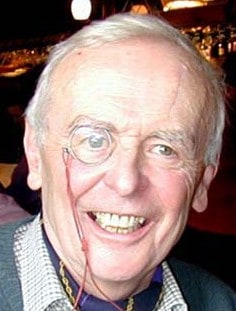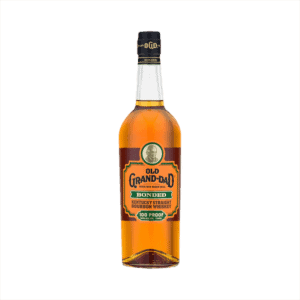Table of Contents
This week
Another week, another book. And this one has nothing to do with newspapers or journalists – except that it is written by one. If you were wondering what had happened to Maggie Hall since she left the Mirror newsroom, the newsdesk, and the New York bureau, and thinking she was last seen dancing in the Stab In The Back with a pint of ale balanced on her head, here’s the answer… she’s had her head stuck in a jar of Marmite. Foreign readers may need to know that Marmite is, basically, a sandwich spread but, as Maggie reveals, it is much more than that. And it’s made from brewer’s waste. Aren’t we all…? Revel Barker provides the update.
Last week we reported the quest by old News Chronicle hands to dig souvenirs of the paper out of the attic to auction and raise funds for a big reunion bash to mark the paper’s folding, 50 years ago in October next year. This jogged Jeff Blyth’s memory about the Case Of The Missing Lowry Sketches. It’s a story in its own right – if there’s anybody out there who still recognises a news story when it’s thrust in front of their noses. And just one of the paintings would pay for a splendid lunch – for the next 50 years…
The same piece took Stan Blenkinsop back more than half a century, to the Cold War and the Polish border, where he was arrested for taking a photo of a road sign. He reckons that he was let out of the Soviet clink because the officer in charge was a News Chron reader.
A week earlier (that would be September 25, and you can find it in the list on the left if you’d missed it) Colin Dunne retaled how he had been robbed of an assignment that made millions for soon-to-be-best-selling-author Andrew Morton. And the mere mention of that name brought back memories for People reporter Andy Leatham. That, incidentally, is how it’s supposed to work with Ranters – one story prompts another, just like it used to do in the pub.
Is the cricket season over yet? Colin Henderson writes about how his paper’s team brought in a secret ringer who saved the day. However, the editor digs out an old picture from the files, revealing that their test-match-spoiler wasn’t the only ringer on the team.
And Colin Dunne, still toiling relentlessly for YOU magazine, crosses several palms with silver and discovers that his future is all behind him.
#
Girl from the black stuff
By Revel Barker
When the paper she was working on folded – without warning, as they all do – Maggie Hall secured an interview with Bill Freeman, northern news editor of the Daily Mirror, with what must be the shortest job application on record:
Dear Mr. Freeman, Help! Help! Help! Yours sincerely. Maggie Hall (Yorkshire Evening News)
She got the job.
She and I had met before that when, as the youngest reporters on our competing newspapers, we’d gone to cover a rock concert in a former tram shed in Leeds. This was so long ago that The Beatles weren’t top of the bill – they were supporting Acker Bilk.
We have remained mates since, even surviving the night when (for the first edition, at least) she got top by-line billing with a single-par rewrite of PA introducing my copy explaining how I’d persuaded Jeffrey Archer to resign as an MP. Yes; some things still rankle a bit, but the friendship was strong enough for me to overcome it. Sort of.
Having made it to London, and tiring of duplicating PA, she joined the news desk and then became Our Man in New York.
That’s where she met the ebullient Gary Humfelt, a computer engineer. Well, it’s not quite. Nothing’s ever that straightforward with Maggie. They met in China, where he was helping set up their airport technology and she was on the first organised tourist trip into the previously closed republic.
Some of her story – including how she covered a Manchester United match and forgot to report the score – is told in Liz Hodgkinson’s excellent book, Ladies of The Street. But it doesn’t mention her love affair with Marmite.
Wherever she’s been, from home in Cleckheaton (West Yorkshire) to the Dewsbury Reporter, the Lynn News and Advertiser (Kings Lynn) to the YENews, the Mirror, Manchester, London and New York and eventually Washington DC where she now lives and writes, the black stuff Gary christened Tar-in-a-jar has gone with her.
And when her new husband slipped and wrecked his knee and Maggie found herself in the unlikely role of a nursemaid, unable to string for the News of the World and People magazine, she decided to write a book about it.
It all involved intensive research and interviewing. No problem there. All the information she unearthed had the makings of a fun book. And one of her oldest chums had meanwhile become a publisher. End of story.
What she’s created is the perfect bog-side book (the Americans would call it a bathroom book) for dipping into at random, packed with information you didn’t know – and didn’t even want to know – about Marmite.
It is, in a word, a fun book. Remember? We used to do fun, when we were reporters.
It is available now and is an ideal Christmas present for those strange people (and we know there are some, out there) who don’t want books about newspapers.
Maggie and Gary, incidentally, keep up the fun. Although she’s lived in the US more than 30 years, every summer finds them back in the UK at their second home in Whitby, North Yorks, hosting an Independence Day party on July 4. You can spot their place on the harbour – the Stars And Stripes flies above it.
Many old hands turn up – Sid Young, Austin Wormleighton, Graham Snowden, Heather Miller among them – for the chicken wings and baked ham and find themselves singing My Country ’Tis Of Thee. Well, at least they know the tune.
It’s the only day when Marmite doesn’t figure anywhere on the menu in the Hall-Humfelt household. Well, it isn’t an American staple… yet.
Maggie will be back in the UK later this month for an extensive tour promoting The Mish-Mash Dictionary of Marmite – an anecdotal A to Z of tar-in-a-jar, and it’s available from amazon in the UK and from Barnes & Noble or amazon in the US. And also in Canada from amazon.
And if you are one of those odd people who prefer books about newspapers and journalism, you’ll find plenty to choose from at the Ranters Bookshop.
#
Missing matchstick men
By Jeffrey Blyth
The big reunion planned for next year (See Ranters, last week) to mark the fiftieth anniversary of the demise of the News Chronicle reminds me of an old story from way back then.
It dates from my stint on the News Chron in Manchester before I joined the Daily Mail. That was in the early fifties.
At the time we had a northern editor, new from London, called Ralph McCarthy. For some reason the Chron cartoonist (Ronald Searle if I recall) was either sick or incapacitated. McCarthy (who later returned to London to be the last editor of the Star), was something of an art fan He wondered whether he could perhaps fill the space left by the absent cartoonist with the work of some contemporary painter. He had in mind the work of the noted Manchester artist L S Lowry. It would give the paper, he felt, a little uplift. And anyway make a change. London gave its ok – assuming Lowry agreed and wouldn’t ask too much money.
Lowry did agree – and offered to produce half a dozen drawings. I was assigned to go to his studio in Salford and collect them. I duly handed them over to McCarthy who ran them in the paper’s northern edition over the next couple of weeks.
They were scenes of everyday Manchester and Salford life, such as crowds in the streets, people queuing for buses, children watching a Punch and Judy show. Did they sell papers? Were they enjoyed by northern readers? Hard to say. I only wish I had kept copies of the papers in which they ran.
Flash forward a few months – some of us were drinking in our local on Cheetham Hill. The conversation got around to Lowry’s drawings – ‘What happened to them?’ someone asked, looking at me… ‘Where are they now?’
I said I didn’t know The last I saw of them was when I handed them over to the editor, Perhaps he had them still. I offered to check the next day. ‘No’, he told me. ’Don’t you have them? Perhaps the art editor has them,’ he ventured.
No; not there. Nor with the chief sub. Nobody knew what happened to the Lowrys. Or at least, nobody would say.
Perhaps they were returned to the artist? Possibly, but to ask and find they had not been returned might create a new problem, opening a new can of worms. Nobody ever said anymore. No more questions. So there the mystery has remained for more than 50 years.
Now if somebody did purloin – or to put it more gently ‘borrow’ – those Lowry drawings, and still has them, they would be worth, I would hazard, a lot of money today.
Certainly, enough to pay for a whizz-bang of a reunion party. So… Anybody know where they are?
#
Get out and meet the readers
By Stanley Blenkinsop

But for that it could have been a matter of life or death for me behind the Iron Curtain as you will see…
I had joined the paper as its Newcastle upon Tyne based north-east district man on the last day of December 1958.
During September 1959 I went on the first ‘Cooks Tour’ to the Soviet Union – by luxury coach from London across Europe via Berlin and Warsaw to Moscow, Leningrad and then back via the Baltic aboard a somewhat Spartan Russian liner to London (three weeks in all).
And, no, it wasn’t a newspaper freebie – I paid the full whack.
As we went across the Polish-Soviet border at Brest-Litovsk there was strict security by the Russian border guards. There was also a giant hoarding showing the road onwards to Moscow – a most impressive placard explaining the route to the world capital of Communism.
‘Make a good souvenir picture,’ I thought and I pulled out my camera to record it. But as I clicked away two Russian solders brandishing their sub-machine guns suddenly swooped on me and hustled me into the border guard post.
In a meticulous strip search they emptied all my pockets then strode out slamming the steel-studded dungeon door. Truly the Iron Curtain had fallen.
After what seemed an age in the unlit and windowless room, the door suddenly clanged open and soldiers jostled me out to a spartan office dominated by a picture of Lenin.
Beneath it sat an impeccably dressed middle-aged man in what looked like a Savile Row suit. On his desk lay some of my pocket possessions – Press card, diary, notebook.
In near-perfect English the man smiled and said: ‘So which British newspaper do you work for?’
‘The News Chronicle,’ I replied
His smile broadened still further, ‘Excellent – the best British newspaper of all. My favourite – I read it every day when I am staying at our London embassy. In fact I often get copies sent to Moscow in the diplomatic bag when I’m back in Mother Russia’.
Proudly he explained that he was in the ‘Soviet department of foreign affairs’ and had just returned to Moscow after a three month posting in Britain. Then he rolled out the names of the News Chron’s best-known journalists like James Cameron and Vernon Bartlett.
Suddenly he stopped. ‘Apologies – we mustn’t keep you any longer – your friends on the coach are getting very worried by the delay.’
He accompanied me towards the bus, getting one of the border guards to carry my luggage which had been searched but carefully re-packed.
As I boarded, he flicked back his jacket lapel. ‘Yes’ he said ‘This suit WAS made in Savile Row!’ And off we went to the world capital of Communism with the border guards waving their tommy guns in salute.
But 50 years later I still wonder if the outcome would have been different had I not been working for a Liberal newspaper like the News Chronicle. Would I have been freed so easily had I been taking pictures of the Iron Curtain while working for the Daily Mail or the Daily Express…?
Incidentally, during the 27 years following the Brest-Litovsk incident and the News Chron closure a month later, I was a journalist on both of those ardent right-wing newspapers.
#
All tied up
By Andrew Leatham
This may not be much comfort to Colin Dunne (Ranters, September 25), but I knew Andrew Morton when he had nowt. Tall, gangly, fresh-faced and wearing owl-eyes sized glasses, he arrived at the Sunday People in Manchester on attachment from the Mirror Group training scheme in Plymouth. A member of the Plymouth Brethren.
We introduced him to the finer points of life in and around Deansgate – Sinclair’s Oyster Bar, the Old Grapes, Manchester Press Club and that wonderful institution The Golden Eagle, the little office on the fourth floor where beer tokens could be obtained in exchange for a piece of paper, signed by the editor, which promised you would repay out of next week’s exes.
Once, in the cause of furthering his journalistic education, I had to take him to Newcastle to confront BT with a story I had already bottomed about an issue that was costing them thousands of pounds a week. The story, which had been found by the People’s Newcastle snapper, the dapper Dennis Hutchinson, was about a single payphone among a bank of about 10 at the Washington service area on the A1M which had developed a fault that meant you could ring China, any time of day or night, for as long as you wanted for just 10p.
News of this had spread rapidly among the Chinese population, not just of the North East, but just about the entire country. On the night photographer Harold Holborn and I visited Washington, the car park was full and there was a queue of around 50 Chinese waiting to use the phone. We called it The Great Chinese Talk Away.
Mr. Morton, nice lad that he was, obviously didn’t have four million quid to rub together in those days and his open-necked shirt fell somewhat short of dapper Dennis’s sartorial standards. After a couple of pints, Dennis could contain himself no more and berated Mr. M for not wearing a tie. ‘You can’t go round talking to people looking like that,’ he started. ‘It’s not that long ago when everybody had to wear a white shirt and a dark suit. Look at the state of you.’
And with that, he persuaded the barman to lend Mr. M a tie.
Off we went, me, Dennis and the Man Who Would Be a Millionaire, to BT’s North East headquarters in the city centre. Ushered into the presence of some engineering bigwig, we told him of the monstrous misuse of BT equipment we had fearlessly uncovered. While we spoke, he picked up the phone and issued some instructions. About 10 minutes later another engineering lesser wing came in and said simply: ‘We’ve fixed it.’ Apparently, the fault was caused by some minor problem that was literally fixed at the flick of a switch.
So we had our story, BT had its reputation intact and Mr. Morton had learnt a valuable lesson in life. He left Newcastle with Dennis’s parting shot ringing in his ears: ‘Next time you come on my patch, wear a tie.’
Andrew left the People to join the fledgling Daily Star not long afterwards. I didn’t see him for a couple of years until I bumped into him coming out of a restaurant in Manchester’s Chinatown. And he was wearing a tie.
#
Another People exposé…
By Colin Henderson
In the sunshine of a summer day some 30 summers ago, a People cricket team prepares (see picture) for battle in the Weald of Kent. Instantly recognisable, back row left, is John du Pré (Dupers) making, at close on 60, his final appearance in the middle after decades as a club cricketer, and front right, with bat, umpire Nat Rothman.
For about 15 years ‘Gentleman’ John, an assistant editor, subbed virtually all the People‘s major exposures. And with his clipped moustache, sleek black hair and immaculate French, through a Jersey upbringing, he appeared many times in a Paris glossy magazine in the sixties, complete with bowler, pinstripe suit and rolled-up umbrella, as a typical City gent-in-the-know and out and about in London.
But John and Havana cigar-smoking lawyer Nat, formerly the paper’s deputy editor then leader writer, are not the main attractions in the photo, taken on Leigh (pronounced Lie), green near Tonbridge. Look closely at the cove in the blue cap in the back row and, to his left, People reporter Dan Wooding.
As skipper of the team, which was taking on a side from the village, once a major cricket ball and cricket bat manufacturing centre, I was grateful when Dan showed up with a friend as we were, not unusually, not one, but two men short. ‘He’s quite useful and very keen to play,’ said Dan.
The People batted first. Badly. But our ringer, Mr. Blue Cap, coming in at No.7, tonked a breezy 70 to make the score reasonable. He arrowed the ball in over the stumps when we fielded. As our mainline attack floundered, I gave him the ball. In no time he had taken four wickets and our 10-man squad just got home.
Later in the pub — the Bat and Ball, naturally — I went over with a pint to congratulate our classy match-winner who stood modestly in a corner, and asked which team he played for. Dan stepped forward. ‘Don’t press him too much,’ he hissed. ‘I’m afraid he’s got a bit of history.’
And so it proved. Dan revealed, later, that he had got to know his pal when working on the George Davis Is Innocent story. Mr. Blue Cap was associated with everyone concerned in the campaign and had been involved with the group that dug up the Headingley pitch during the Test against the Aussies in 1975. With oil also poured over one end of the pitch, the match was abandoned.
Naturally, his involvement in this act of desecration in support of the headline-grabbing East London mini-cab driver had not gone down well in the tasty London cricketing circuit in which he had been involved, and even now it was proving difficult for him to find teams to play for. Hence his acceptance of Dan’s offer to turn out for the People.
It wasn’t the sort of information that I wanted my village pals to hear. Besides producing cricket equipment, our picturesque green had staged the sport for more than 200 years, hosting Kent county teams. Only recently, Colin Cowdrey and Aussie star John Inverarity, who lived for a time in the village, had graced the ground, while Yorkshire’s finest, Michael Parkinson, had been dismissed cheaply playing for a Granada XI (Lord Bernstein had a large gaff nearby). To let the village team know that anyone connected with such an abhorrent exercise as pitch-wrecking had trodden on their hallowed wicket would have got me blackballed. Dan and Mr. Blue Cap’s departure for home was a relief.
It took me more than a decade to let rip in the same pub my yorker about the People‘s grievous crime. There were some mutterings among the committee members, but the situation was saved when one observed: ‘I never liked the People but I got it to read the Trueman column.’
Now if Fiery Fred had been playing for us that day….
Footnote 1: John du Pré, is still completing life’s innings, in a care home in a Wiltshire abbey. Next to him in the back row are Chris Evenden, Colin Henderson and Mervyn Pamment, with, far right, the Leigh umpire. Front row from left: Roy Wright, Mike Slate, David Alford and Frank Thorne.
Footnote 2: The George Davis campaign helped get Davis released — he had been banged up on weak evidence for a payroll attack in Essex in 1974. However, he was later jailed for two other armed robberies. One man went to prison for the Headingley incident.
But, talking of ringers, here’s the Sunday Mirror first XI, playing at the Oval.
And… yes… art desk guy Roy Wright was playing for both teams. Happily for him, the Sunday Mirror never turned out against the People.
The SM team is: Vic Birkin, Peter Cook, Big Mal, Paul Donovan, Dave Ellis, Brian Checkley. Front: Graham Gadd, Keith Fisher, Russell Cox, Ringer Wright, Terry Saunders.
#
Back to the future
By Colin Dunne
This life-story is taking longer to write than it did to live.
Most of those who were here at the start, about 100,000 words ago, will have been driven by boredom to get the single ticket to Dignitas (or, for Mirror pensioners, the cheaper option at Beachy Head). Those who are still clinging to the wreckage may remember that, in those early days, I rather resented being sent to interview talking dogs and running in lawnmower races. This, I felt, was poor preparation for my career as one of those hotshot foreign corrs of the here-in-blazing-Beirut school.
As it turned out, I was much more at home with dogs and lawnmowers than with war and pestilence. My only skill, and a pretty slender one at that, was for plaiting fog: writing stories with as few facts as possible; occasionally – in moments of true inspiration – with none at all. It took me a little while to settle to the idea that I was essentially a writer of candy-floss crap.
When YOU, the Mail on Sunday colour magazine, came along, I whooped with delight. This was a magazine where they loved the off-beat, the quirky, the whacky and the slightly nutty, all of which were within my range of accomplishments. In fact, they were the total sum of my accomplishments.
I had found my natural home.
So, inevitably, one of the first things they did was to send me to Blackpool. Editors and their assistants usually come up with the Blackpool idea round about the fourth bottle over a languid Langan’s lunch, largely, I suspect, because they don’t believe there is such a place. So when writers and snappers come back with stories of smelly donkeys and clattering trams it’s as near as they wish to get to the real world. Since I was thought to speak the language, I was sent there several times.
But since YOU mag was the best ideas factory I ever came across, it was with a brief of delightful brevity: Find the original Gypsy Rose Lee. Now anyone who has ever fooled around in the shallow end of our trade will know that the best ideas are both simple and silly. What you don’t want is an idea that comes with a list of people to interview and questions to ask them. As we all know, it’s much better just to go along and see what happens. Find Gypsy Rose Lee? You couldn’t get much simpler, could you? Or sillier.
Practically the first thing I saw on the promenade was a sign outside a gypsy fortune-teller’s booth that yelled: ‘Read what Colin Dunne Wrote about Me in the Daily Mirror.’ That was from an earlier visit. What I had said about her was that when it came to second-sight, she was in serious need of bifocals, but somehow that bit seemed to have been omitted from the cutting.
Where the soothsayers were spot on was that they saw a skinny Yorkshireman with a fat wallet heading their way, and soon it would be stripped bare. If you really want to get rid of your money quickly, this was on a par with playing poker with Sid Williams.
Nowhere could I see Gypsy Rose Lee. On Blackpool prom, they were all called Petulengro, which apparently is the Romany version of Smith, and they were all accustomed to dealing with the world’s leading glitterati. Outside their booths, beneath photos of famous faces, they assured Bruce Willis that he’d got a TV biggie coming up, that Liz Taylor had health problems, and Warren Beatty was restless. What’s more, these stars of that time hadn’t even had to extend their palms. These were free samples. For me, they weren’t quite so free. The crystal ball was £50 even then, and that was without broadband.
A five got me a quick palm-reading and my future was laid before me. Money, success, health and happiness were heading my way in embarrassing profusion, so were grandchildren – nine at least – and I would be going over water. Not bad, eh? And that was long before we even knew about Ryanair. So far I’ve got only five grandchildren, but I’ve had a word with my kids about it and they’re going to try again.
The gypsies predicted a long life with good health, which, as they said, was better than a long life with poor health. And better still than having perfect health when you’re dead.
Would this be in the magazine, they wanted to know. Yes, I assured them; you can buy it at W H Petulengro’s.
I continued the search at Epsom on Derby Day where the racecourse was lined with Lees: Harriet Lee, Maria Lee, Nancy Lees, Betsy Lee, and probably a Robert E, if you looked hard enough. According to their posters, they’d made some astonishing predictions. They’d told the former Prince of Wales that he’d be crowned but would never be king. They’d told John Lennon what fate awaited him. They’d told Grace Kelly she would be a princess. Of course since this was all after the event, it was predicting the future with hindsight, which certainly makes for greater accuracy.
It was then I learnt the secret rallying call of the ancient Romanies. Wave a wallet in the air and they’re all around you in less time than it takes to bake a hedgehog. They all gazed into my eyes and said I was clearly a gen’l’man who was generous with money. Like their sisters in Blackpool, they too had had all the stars in. ‘Like that Judith Chandler.’ Did she mean perhaps mean Raymond Chalmers, the well-known thriller TV presenter?
But the best, the one who was real value for Rothermere money, was old Betsy, who crooned: ‘Many’s the sorrowful hour you’ve had and many’s the crooked road you’ve travelled.’ She must have been with a touring company production of Macbeth. Or reading my exes.
As I was picking my way through the line of shining Mercedes behind the caravans, a shirtless man who was no bigger than a furniture van beckoned me over and said he earnestly hoped I wouldn’t be writing anything unfavourable about the fortune-tellers.
As he said this, he ran a plastic comb through his chest hair, a surprisingly intimidating gesture.
I looked around for Bradshaw, my fearless photographic companion, and saw he was moving away rather faster than the nag I’d backed in the 2.30. He’d seen the future and he didn’t think much of it.
Whenever you hear those occupying lower ranks of journalism presume to rate their officer class, you must remember that there is an unseen influence at work here. It’s not so much about the intelligence, creativity and flair rating of the editors: it really comes down to whether or not they used my stuff. So when I say that Peter Stephens on the Evening Chronicle in Newcastle, the Freeman-Price team at the Manchester Mirror, or Larry Lamb and Nick Lloyd at the Sun, were of the journo-genius class, you’ve got to allow for the fact that they put me in the paper day after day. If I rave less about the Molloy-Hagerty and Kelvin-Greenslade double-acts at the Mirror and Sun respectively, I am possibly influenced by the memory that they were able to survive for weeks without reading my by-line. Inexplicable, I know.
Even so, when I say that the team which produced YOU magazine was the best I ever encountered in half-a-century of non-stop typing, you’ve got to bear in mind that they commissioned me almost every week, sent me on the sort of stories I dreamed about, and then kept stuffing fat cheques through my letterbox.
That’s all true. Equally it’s true that newsagents reported their customers were stealing the magazine out of the Mail on Sunday and slipping it between the pages of the Sunday Times. So it wasn’t just my vanity. Well, not completely.
With Nick Gordon and Felicity Hawkins running it, Jonathan Bouquet, John Koski and John Chenery doing the commissioning, YOU mag was simply the wittiest and most original editorial team I ever met.
Their idea was that if it’s fun to write, it’s fun to read, which beats Honi Soit as a motto, hands down.
Bradshaw didn’t always escape quite so easily. When we went to spend a little time with Katy Cropper in Wensleydale, he was left – okay, we were both left – in need of intensive care. Raucous, warm-hearted, riotously funny and startlingly pretty, Katy had won television’s One Man and His Dog and toured the country shows with her travelling circus of dogs, ducks, sheep and pony. When we found her in the Moorcock Inn at Garsdale Head, she picked up a large gin and warned both of us: ‘Don’t try to drink with me.’
With my three-drink capacity, I thought then I must careful. Bradshaw, always the macho smoothie, gave the forgiving smile of man who’s been around a bit (everywhere from El Vino to Vagabonds, not to mention the Florida bars of the Enquirer) but doesn’t like to boast. He certainly wasn’t unduly alarmed by… ahem, a shepherdess. That was his first mistake. His second was promising to help her round up her animals for tomorrow’s show at 5.30am.
I’d like to say that I’ll never forget that evening. The truth is that I can hardly remember any of it.
There were gins. There were tonics. Large ones. Again and again. There was Katy tossing those black curls back as she belted out ‘Old Shep’. There were glasses of wine, well more like buckets really, in her cottage, once you’d fought your way through the letters, old bills, muddy wellies, silver cups, and designer clothes – this was a woman who had her hair cut by Toni and Guy in London or did it herself with sheep shears when at home. ‘Shut up you daft buggers,’ she shouted, as her dogs start barking. Then, another crisis: ‘Bloody ’ell, I’ve got to clip me sheep’s bottoms.’
Back in the pub, with her dog Trim sitting beside her, paw on bar, she declared she would never have children. ‘You haven’t seen what sheep go through,’ she said. Then she began to tell us, and Bradshaw and I begged her to sing Old Shep – yet again.
In a dark Dales dawn the next morning, I was praying for death. Staggering with exhaustion, face a sick yellow, coughing piteously, Bradshaw, to his great credit, helped to round up her eight dogs, 19 ducks, five sheep (including a black one called Fergie and its lamb, Beatrice), and one pony in her truck and trailer. Bradshaw never did say whether he’d helped clip the sheep’s bottoms, and I never liked to ask.
YOU mag liked what Felicity called ‘ripping yarns’, and there were few more ripping than the aristocratic German family who, threatened by the advancing Russians in 1945, buried the family silver in field near their mansion in Magdeburg and fled west. After the Wall came down, they went back to try to find it.
With Bradshaw yet again, I went to Bremen where, our stringer had assured us, they were expecting us and would relate the whole story. They did. Unfortunately they related it in German. They were the only Germans I have ever met who spoke no English. When Bradshaw and I walked in, Herr Shroeder and his wife sat at the table, smiling, with an Anglo-German dictionary in front of them. It took all that day and most of the next to get the story: but it was good stuff.
Herr Shroeder was about six when the war ended and he could remember helping to wrap the silver in newspapers and put the goodies in a huge chest before dragging it down the field to bury. He knew exactly where: right next to the wooden stables. Unfortunately, when they got there the stables had long gone.
By chance, he managed to find an ancient parlour maid who could remember where the stables used to be. Sure enough, they unearthed dozens of huge silver cups and plates.
YOU also liked fly-on-the-wall pieces, which I always enjoyed doing. Real reporters like being up at the front, asking questions and demanding answers. Delicate little features creatures like me are better employed lurking and skulking on the fringes, which is the way to do wall-fly pieces.
At Al’s car auction in South London, I lurked while Al himself sat behind barred windows. Experience had taught him to keep a little distance between himself and any disappointed customers. Although he was merely a middleman who took the entrance fee and commission, he had ended up hospital with broken bones. There was the Austin Princess that was down at the front and had been levelled up by filling the boot with ready-mix concrete. The buyer had to get it out with a road drill.
The auctioneer’s patter said it all. A battered Lada had lots of extras… ‘pump-up tyres, see-through windows, opening doors.’
About once a fortnight, I’d be summoned to the Wodka restaurant just behind the Mail office, where Koski, Bouquet, Houlihan and Chenery would suggest a final polish to the last piece, hand out the brief for the next one, wave up the red wine and the hunters’ stew, and – every once in a while – inflict a unilateral fee increase on me. It beat coal-face work.
It worked because they all knew exactly what the magazine wanted. Each idea was carefully worked out, and they matched stories to writers with infinite care. With a dream set-up like this, it seemed to me impossible for any writer to fail…
That’s not quite true. Out of the scores of pieces I wrote over the years for them, only one failed to make it. I was paid for it, of course.
Do you think anyone would notice if I tried to flog it again? Once a freelance…
###





















































